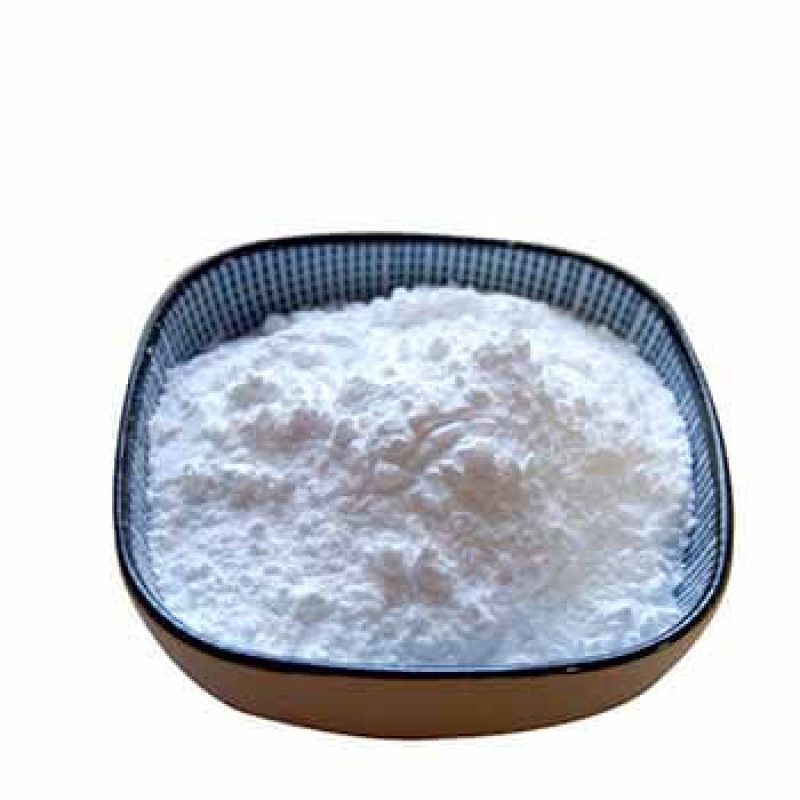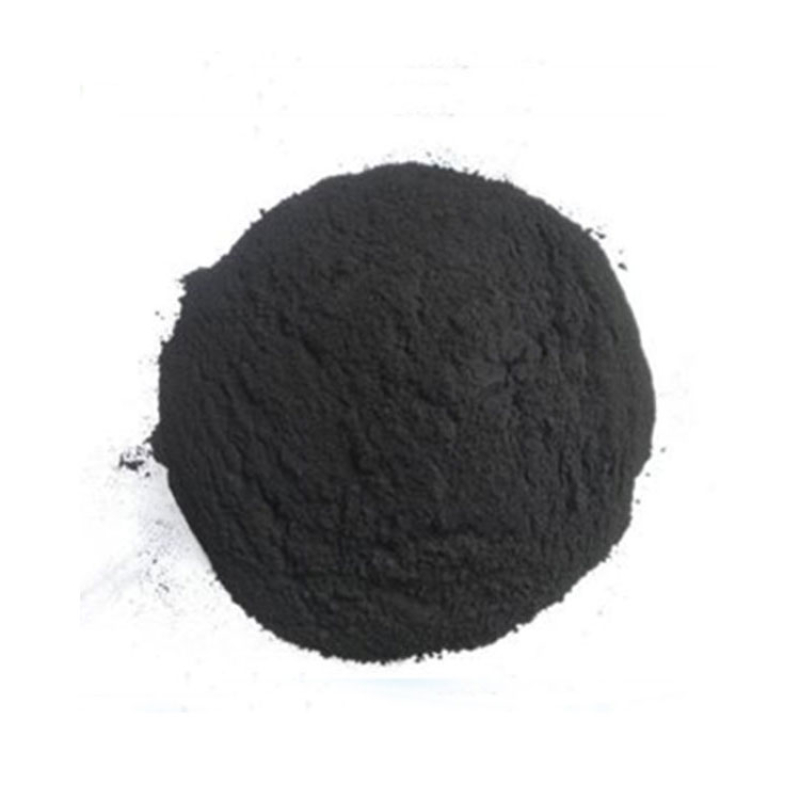Products Description of 3,4-Dimethoxythiophene CAS#51792-34-83,4-Dimethoxythiophene is an organic compound with the molecular formula C6H8O2S.3,4-Dimethoxythiophene Chemical PropertiesBoiling point 100-102 °C/10-11 mmHgdensity 1.209 g/mL at 25 °Crefractive index 1.5409Fp 224 ºFstorage temp. -20°Cform powder to lump to clear liquidcolor White or Colorless to YellowWater Solubility Miscible with organic solvents.
Contact Now
Products Description of 3,4-epoxycyclohexanecarboxylate CAS#2386-87-0The alicyclic epoxy resin 3,4-epoxycyclohexylmethyl 3,4-epoxycyclohexylcarboxylate overcomes the shortcomings of traditional bisphenol A epoxy resin, such as poor weather resistance, high temperature resistance, and poor impact resistance, and has received great attention from all walks of life.
Contact Now
Products Description of 3,4-Dibromothiophene CAS#3141-26-23,4-Dibromothiophenol is a colorless to pale yellow liquid with a boiling point of 221-222°C and a melting point of 4-5°C.3,4-Dibromothiophene Chemical PropertiesMelting point 4-5 °C (lit.)Boiling point 221-222 °C (lit.)density 2.188 g/mL at 25 °C (lit.)refractive index n20/D 1.640(lit.)Fp >230 °Fstorage temp. Keep in dark place,Sealed in dry,Room Temperatureform Liquidcolor Clear colorless to yellowSpecific Gravity2.188BRN 107642InChIKeyVGKLVWTVCUDISO-UHFFFAOYSA-NCAS DataBa
Contact Now
Products Description of 6,7-Dimethoxy-3,4-dihydroisoquinoline hydrochloride CAS#20232-39-76,7-Dimethoxy-3,4-dihydroisoquinoline hydrochloride is an intermediate for the synthesis of tetrabenazine.
Contact Now
Products Description of 3,4-Dimethylpyrazole phosphate CAS#202842-98-63,4-Dimethyl-1H-pyrazole dihydrogen phosphate is a yellow or white crystalline powder substance, which can be used as a new type of nitrification inhibitor and can be used in solid and liquid fertilizers.3,4-Dimethylpyrazole phosphate Chemical PropertiesMelting point 167-169°Cstorage temp. Inert atmosphere,2-8°Csolubility Methanol (Slightly), Waterform Solidcolor White to Pale BeigeStability:HygroscopicFactory and Equipment ShowFast transport timeInventory 2-3 working days New man
Contact Now
Products Description of 3,4-Diaminotoluene CAS#496-72-0 3,4-Diaminotoluene is a chemical with the molecular formula C7H10N2.3,4-Diaminotoluene Chemical PropertiesMelting point 87-89 °C (lit.)Boiling point 155-156 °C/18 mmHg (lit.)density 1.2207 (rough estimate)refractive index 1.5103 (estimate)Fp 155-156°C/18mmstorage temp. Keep in dark place,Inert atmosphere,Room temperaturesolubility Chloroform (Sparingly), Methanol (Slightly)pka4.59±0.10(Predicted)form Crystalline Chunks or Flakescolor Brown to grayish-brownWater Solubility 16 g/L
Contact Now
Products Description of 3,4-Dihydro-2H-pyran CAS#110-87-23,4-Dihydro-2H-pyran, referred to as DHP, is an organic intermediate often used as a protective group.
Contact Now
Products Description of Sesamol CAS#533-31-3Sesamol, also known as 3,4-methylenedioxyphenol, is a fat-soluble lignan compound. It is an important component of sesame oil and an important quality stabilizer for sesame oil. Sesamol is present in sesame seeds, sesame oil and sesame meal, and can be continuously decomposed by sesamelin during thermal processing. The highest concentration in sesame oil can reach 64.4 mg/(100 g).Sesamol has a very strong antioxidant capacity and has been proven to have anti-inflammatory and intestinal function regulating effects.
Contact Now
Products Description of 1,3-bis(3-glycidoxypropyl)tetramethyldisiloxane CAS#126-80-7Colorless liquid1,3-bis(3-glycidoxypropyl)tetramethyldisiloxane Chemical PropertiesMelting point <0°CBoiling point 184 °C2 mm Hg(lit.)density 0.996 g/mL at 20 °C(lit.)refractive index n20/D 1.452Fp 110°CSpecific Gravity0.996Hydrolytic Sensitivity3: reacts with aqueous baseBRN 223966InChIInChI=1S/C16H34O5Si2/c1-22(2,9-5-7-17-11-15-13-19-15)21-23(3,4)10-6-8-18-12-16-14-20-16/h15-16H,5-14H2,1-4H3InChIKeyMFIBZDZRPYQXOM-UHFFFAOYSA-NSMILES[Si](C)(C)(
Contact Now
Chlorobenzene CAS# 108-90-7Chlorobenzene is a monocyclic fragrant compound with one hydrogen atom on the benzene ring substituted with one chlorine. It is produced by means of chlorination of benzene in the liquid segment with a catalyst. Chlorobenzene is a colourless, flammable liquid with a candy almond-like odor, at ambient temperature with a incredibly excessive vapour pressure, reasonable octanol-water partition coefficient (log 2.8) and average to low water solubility (497.9 mg/L @ 25℃).
Contact Now
Products Description of 4'-HydroxyacetophenoneCAS#99-93-4Since p-hydroxyacetophenone contains hydroxyl and ketone groups on the benzene ring in its molecule, it is often used as an intermediate in organic synthesis to react with other compounds to synthesize many important substances.
Contact Now
Products Description of Color Developing Agent CD-3 CAS#24567-76-8White powder crystalColor Developing Agent CD-3 Chemical PropertiesWater Solubility Soluble in waterform powder to crystalcolor White to Light yellow to Light orangeInChIInChI=1S/2C12H21N3O2S.3H2O4S/c2*1-4-15(8-7-14-18(3,16)17)11-5-6-12(13)10(2)9-11;3*1-5(2,3)4/h2*5-6,9,14H,4,7-8,13H2,1-3H3;3*(H2,1,2,3,4)InChIKeyNPDFXFLCEDDWEG-UHFFFAOYSA-NSMILESC1(=CC=C(N)C(C)=C1)N(CC)CCNS(=O)(=O)C.C1(=CC=C(N)C(C)=C1)N(CC)CCNS(=O)(=O)C.S(=O)(=O)(O)O.S(=O)(=O)(O)O.S(=O)(=O)(O)OSafety InformationHazard Codes Xn;N,N,XnRisk
Contact Now
Monopotassium phosphite CAS#13977-65-6Potassium dihydrogen phosphite, a chemical with the molecular formula KH2PO3, can be used as a direct bactericide and complexing agent for calcium and magnesium ions in industrial circulating water.
Contact Now
Products Description of Antioxidant 168 CAS#31570-04-4Antioxidant 168 is a phosphite antioxidant with excellent performance. It has strong extraction resistance, is stable against hydrolysis, and can significantly improve the light stability of products. It can be used in combination with a variety of phenolic antioxidants. . For example, Cyanox2777 developed by the American company Cyanamid is a compound of antioxidant 168 and phenolic antioxidant 1790. The combined use of phosphite and phenolic antioxidants can give full play to the synergistic effect.
Contact Now
Products Description of 3-Acetyl-2,5-Dichlorothiophene CAS#36157-40-13-Acetyl-2,5-dichlorothiophene is an organic intermediate and pharmaceutical intermediate. 3-Acetyl-2,5-Dichlorothiophene Chemical PropertiesMelting point 37-40 °C (lit.)Boiling point 120-122°C 4mmdensity 1.4514 (estimate)Fp >230 °Fstorage temp. Keep in dark place,Inert atmosphere,2-8°Cform solidcolor White to Yellow to OrangeBRN 121288CAS DataBase Reference36157-40-1(CAS DataBase Reference)NIST Chemistry Reference2,5-Dichloro-3-thienyl methyl ketone(36157-40-1)Sa
Contact Now
Products Description of 1-(4-Chlorophenyl)Piperazine Dihydrochloride CAS#38869-46-4Para-Chlorophenylpiperazine (pCPP) is a psychoactive drug of the phenylpiperazine class. It is relatively obscure, with limited human use, and produces slightly psychedelic effects.
Contact Now
4-(1-Acetylpiperazin-4-yl)phenol CAS#67914-60-7Crystalline compound.
Contact Now
Products Description of Antioxidant 168 CAS#31570-04-4Antioxidants are organic compounds that can inhibit or delay the thermal oxidation of polymers and other organic compounds in the air. Usually, adding a small concentration of 1% antioxidant is very effective. For example, foods are prone to oxidation and deterioration, and a small amount of antioxidants can be added to extend their storage time. Polymer materials such as plastics, synthetic fibers and rubber are prone to thermal oxidation degradation reactions.
Contact Now
Products Description of Carbon Black CAS#1333-86-4Carbon black is a finely divided form of carbon. It may ignite explosively if suspended in air in the presence of an ignition source or slowly undergo spontaneous combustion upon contact with water.In addition, it is toxic by inhalation, with a TLV of 3.5 mg/m3 in air. Primary uses are in the manufacture of tires, belt covers, plastics, carbon paper, colorant for printing inks, and as a solar-energy absorber.1. It is edible black pigment.
Contact Now
Products Description of Imidazole CAS#288-32-4 Imidazole, with the molecular formula C3H4N2, is an organic compound, a type of diazole, and a five-membered aromatic heterocyclic compound containing two meta-nitrogen atoms in the molecular structure. The unshared electron pair of the 1-nitrogen atom in the imidazole ring participates in the cyclic conjugation, and the electron density of the nitrogen atom is reduced, making it easy for the hydrogen on this nitrogen atom to leave in the form of hydrogen ions.Imidazole is acidic and alkaline, and can form salts with strong bases.
Contact Now
Products Description of Calcium Formate CAS#544-17-2Calcium formate is an organic substance with the molecular formula C2H2O4Ca. It is used as a feed additive and is suitable for all types of animals. It has acidification, anti-mildew, antibacterial and other effects.
Contact Now
Ethanol CAS# 71-23-81-propanol is the compound with the hydrogen atom in the propane molecules being changed by way of hydroxyl group. Because the hydroxyl crew can alternative the hydrogen atoms contained in the carbons in the two terminals of carbon chain or center carbon, hence producing two isomers, n-propyl alcohol and isopropyl alcohol.The chemical property of the 1-propanol is comparable to that of ethanol.
Contact Now
Products Description of Palladium CAS#7440-05-3Palladium is a transition element of Group III (nickel group) and light platinum metal in the periodic table. It is a silvery-white metal that is moderately hard, moderately forgeable, and ductile. Palladium is an intermediate element in Group 10 of transition elements (periods 4, 5, and 6). Many of its properties are similar to those of nickel, which is above it, and platinum, which is below it, in this group. Palladium is a soft, silvery-white metal that has chemical and physical properties very similar to those of platinum.
Contact Now
Products Description of Hydrogenated Starch Hydrolysate CAS#68425-17-2Hydrogenated Starch Hydrolysate is a colorless, odorless, transparent, viscous liquid. It is non-crystalline. It has strong hygroscopicity, sweet taste, and is highly soluble in water but difficult to dissolve in ethanol.
Contact Now


































